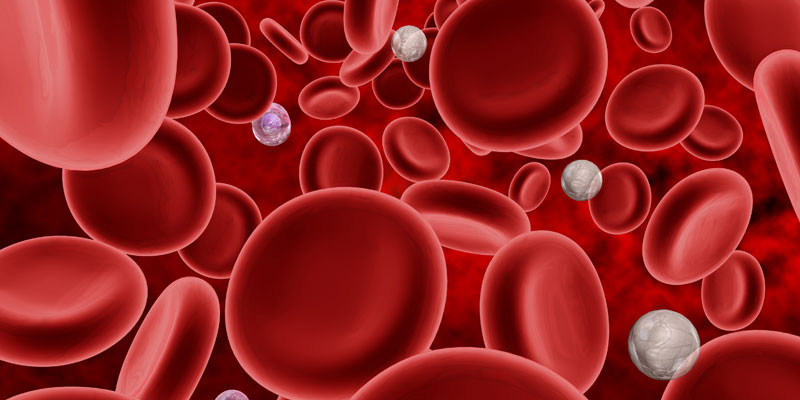York team develops designer proteins to control blood production
York scientists collaborate with colleagues in the USA and Germany on potentially groundbreaking new research.

An international team of researchers from the Universities of York, Stanford (USA) and Osnabrück (Germany) have developed an engineered protein responsible for controlling blood cell production, potentially paving the way for the development of new molecules that can fine-tune this process.
Cytokines are a family of proteins that direct many different vital processes in the human body, but are especially important for fighting infections and controlling the number of blood cells in circulation. Cytokines work by binding specific receptors on blood cells, providing instructions on how many and what types of blood cells are needed.
Critical
Thrombopoietin (TPO), which is the cytokine this study focused on, is critical for controlling blood stem cells and producing platelets - tiny blood cells involved in the clotting process. If the way TPO communicates with blood cells is altered, usually as a result of genetic mutations, it can lead to bone marrow failure, clotting disorders or blood cancer.
The study, which has been published in Cell, was initiated following a groundbreaking discovery by collaborators Professor Chris Garcia and Dr Naotaka Tsutsumi at Stanford University in California, USA, when they determined the protein structure of TPO interacting with its receptor for the first time.
Unique
This provided unique insights into how these proteins interact and enabled the research teams to design proteins that alter these interactions. Co-corresponding author Ian Hitchcock, Professor of Experimental Haematology in the York Biomedical Research Institute and Department of Biology, led a five-strong group at York that characterised altered TPO protein. They found that by making tiny changes to TPO, they could change how it interacts with its receptor, significantly altering the signals blood cells receive, which in turn has profound effects on blood cell production.
Professor Hitchcock explains how the structure was a critical first step in designing TPO modifications: “To understand how the TPO receptor works, you need to know what the protein actually looks like,” he says. “Once you know what it looks like you can design ways to make it do different things, like blocking or activating it.
“What we wanted to do was change the way TPO interacts with its receptor,” he says. “They might come together in a number of different ways which we can control; we can bring them together for a shorter or longer time or at a different angle - all of which send a different message to the cell - and therefore elicit different functions.
“We can control the cytokine itself, and alter the way it drives blood cell production.”
Tested
His team has tested dozens of TPO modifications, and is now zeroing in on a small number that could lead to either further discoveries or new treatments.
“We’re learning that we don’t just have to rely on the TPO we all have circulating in our bloodstream and drives a standard set of signals and has a well-defined response in cells”. says Ian.
“Altering how TPO interacts with its receptor allows us to design TPO variants that have specific roles in controlling blood cell production”.
Professor Jeremy Mottram, Director of the York Biomedical Research Institute, said “This new ability to design cytokines for specific roles could lead to the development of new treatments for a variety of blood diseases, from bone marrow failure syndromes to specific blood cancers. They could also be used to make more blood stem cells for bone marrow transplants. Professor Hitchcock’s research is at the forefront of efforts in the Centre for Blood Research at York to identify new strategies to deliver therapeutic benefit to patients.”
Notes to editors:
- Read Structure of the thrombopoietin-MPL receptor complex is a blueprint for biasing hematopoiesis on Cell.com
- The University of York's involvement with this project was funded by Cancer Research UK